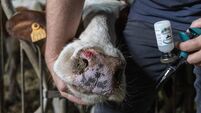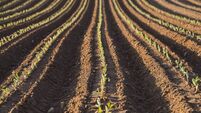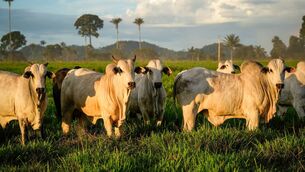Precision farming technology the way forward
To be more efficient, use less inputs, have less of an environmental impact, precision farming is the answer, said Jake Freestone, who manages the 1,560-hectare Overbury Farms estate on the Gloucestershire-Worcestershire border.
He said precision farming offers three main benefits — first and foremost the cost saving, environmental benefits secondly, and benefits in marketing.
Cost savings come from accurate field operations, resulting in reduced diesel, man-hours and wearing parts. At Overbury Farms, £1,400 (€1,690) has been saved in six years in a nine-hectare field, through variable rate phosphate fertiliser applications to match varying fertility across the field. “Before precision farming, we had to make do with a blanket approach to inputs.”
He said pulling a four-metre cultivator with a 6% overlap (only 23cm) reduces output from 3.2 to 3.0 hectares per hour, and increases the cost from £33.06 to £34.57 per hectare. But accurate work with precision equipment saves £1,500 for one pass on 1,000 hectares.
The environment benefits from more accurate fertiliser usage, made possible by techniques like satellite imagery to monitor crop canopy development. This lowers the risk of nitrogen leaching from the soil due to excessive application — and brings a yield benefit of between 3% and 8%, according to results of six years of trials at Overbury Farms.
The marketing benefits — modern farmers using the best equipment are likely to be the most efficient, more environmentally friendly, have better traceability, produce better quality, and be more profitable and financially sound. “These attributes appeal to our customers, helps build trust and strategic business alliances,” said Mr Freestone.
For the arable farmer, precision farming includes yield mapping and monitoring of what is being produced from where in each field — and which areas are not delivering, having had the same level of investment. Variable rate seeding and fertiliser application, weed mapping and scouting, variable rate spraying, and boundary mapping and topography mapping are the precision farming solutions.
It’s not just arable farmers who can benefit, he said. Robotic milking, the Lely Feeder that automates feeding, and remote monitoring to assess individual cow performance are also part of precision farming.
“Our indoor intensive pig and poultry units have been monitoring temperature, humidity, water use, energy consumption, growth rates, mortality and health issues for a number of years now, with better performance as a result,” said the Oxford Conference speaker.
“Grassland based farming can also benefit from less expensive light bar guidance systems that can still deliver substantial savings when applying fertiliser or pesticides where there are no tramlines. A cheap light-bar setup can cost as little as £800. At that price, it is accessible to every farmer, and shows that size doesn’t always matter.”
*Apps for computers and smartphones are adding to the usefulness of precision farming. Mr Freestone said apps that help measure leaf area indices for rape and wheat, allowing better assessment of retained nitrogen, can be downloaded for as little as £1.99. They can assist in forecasting disease risk, or allow fertiliser calculations in the field.










